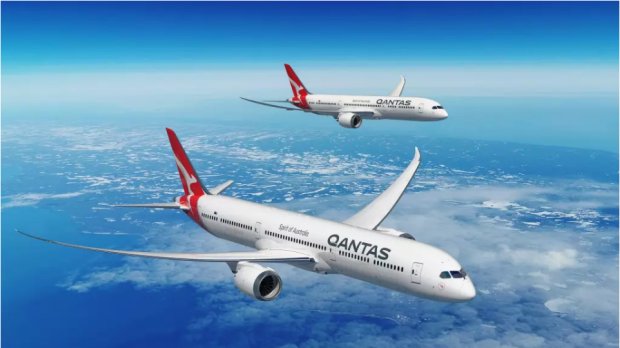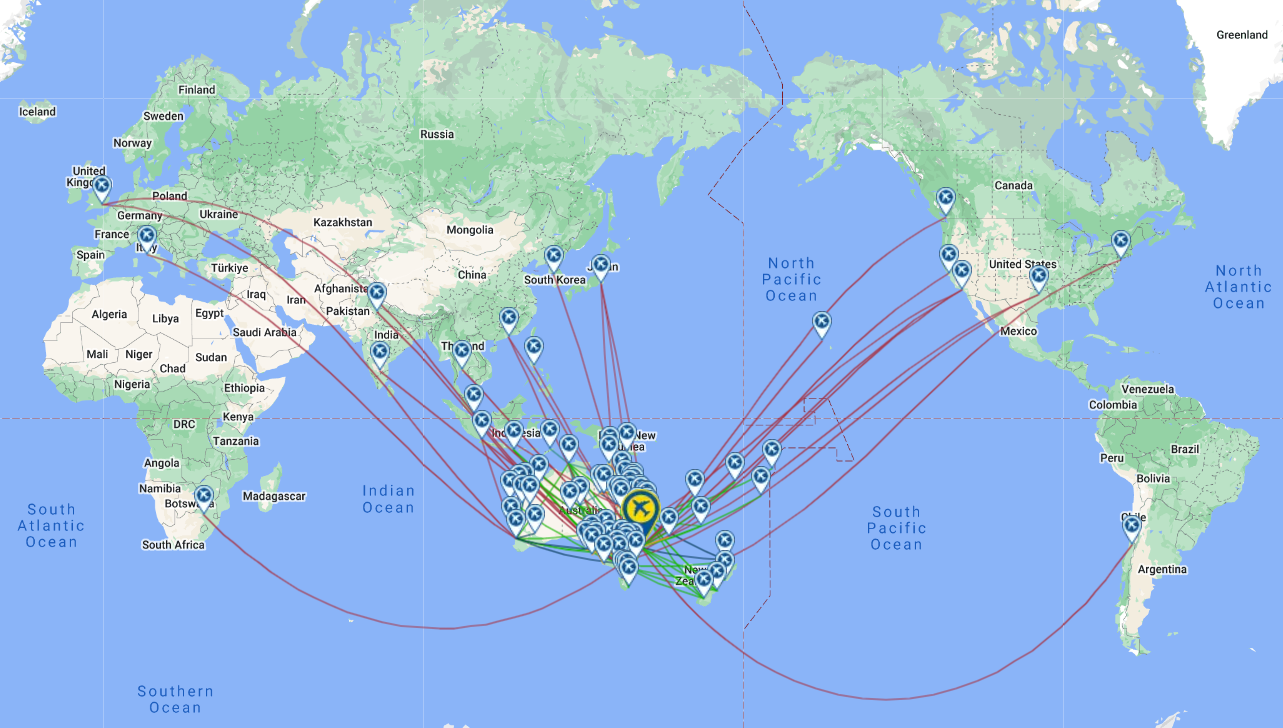Qantas will boost versatility of international fleet with new widebody order

The latest round of aircraft orders from Qantas has major ramifications for its international network, as the airline fills in more detail about the shape of its fleet for the next few decades. Qantas has secured additional orders for Boeing 787s and Airbus A350s for the replacement of its A330 fleet, and it has also confirmed that it intends eventually to use A350-1000s to replace its A380s. This follows earlier order decisions that covered the refresh and growth of other parts of the group’s fleet. Qantas described the new widebody orders as “the final piece of its jet fleet renewal programme”. The latest move is far more than a mere replacement, however, as the aircraft ordered will have more capabilities than the A330s. This will give the airline greater network opportunities and planning flexibility.
Summary:
- Qantas has ordered four 787-9s and eight 787-10s from Boeing, joining the 14 787-9s it already has.
- From Airbus, Qantas has ordered 12 A350-1000s, adding to its existing order of 12 for Project Sunrise.
- Undisclosed number of purchase rights will include A350-1000s to replace A380s from FY2032.
- 787-9s and A350-1000s can serve any part of international network; 787-10s can reach all A330 routes.
New orders will add to existing 787 fleet and A350 commitments
Qantas has been signaling for several months that it was considering its A330 replacement options. In parallel with its annual earnings announcement on 24-Aug-2023, the airline announced a firm order for 12 787s and 12 A350-1000s, along with an undisclosed number of purchase rights.
The 787s, comprising four 787-9s and eight 787-10s, are due to begin arriving in fiscal year 2027, which begins 1-Jul-2026.
The A350s in this order are scheduled to be delivered from FY2028.
Qantas operates 27 A330s on international routes to Asia and North America, and on some domestic routes. It also has one A330 inactive, according to the CAPA - Centre for Aviation fleet database.
The average age of the A330s is 16.5 years, not counting the inactive aircraft. The airline operates both the A330-200 and A330-300 versions.
Qantas already has 14 787-9s in its fleet, having taken delivery of another three this year. It has pre-existing orders for 12 A350-1000s for its Project Sunrise ultra-long range flights, and those aircraft are due to begin arriving in FY2026.
The Project Sunrise A350s will have special modifications to boost their range for these record-breaking flights, although the A350s in the latest order will not have these modifications.
Boeing 787-9s, 787-10s and A350s will have different roles within the widebody fleet
Selecting these two types to replace the A330s is obviously not a like-for-like swap.
Rather, it shows how Qantas has considered the ideal structure for its international fleet and put orders in place to achieve it.
Qantas network map for the week commencing 28-Aug-2023

Source: CAPA - Centre for Aviation
The 787s and A350s will give the airline greater flexibility in its widebody deployment. Qantas has said that the added range of these types will allow them to operate anywhere in the airline’s existing international network, as well as opening up new destinations.
More specifically, the 787-9s and the A350-1000s will be able to serve all the current routes, including those such as Sydney-Dallas, Perth-London and Sydney-Johannesburg, which are beyond A330 range.
The 787-10s have less range than the 787-9s, but will be able to operate the current A330 network, including flights to Asia, and between Brisbane and Los Angeles.
The new order pins the future of the widebody fleet more firmly on the 787s and A350s, particularly after the A380s are retired. Both types will have very large roles, and the two major manufacturers will have relatively equal stakes in the widebody fleet.
In the longer term, purchase rights will allow Qantas to replace A380s with A350-1000s
Both agreements include purchase rights, as well as the firm orders. Qantas said the purchase rights, split between Boeing and Airbus, would allow it to complete the A330 replacement and allow for fleet growth beyond that.
The purchase rights include A350-1000s, which will be used to replace the airline’s 10 A380s from FY2032. The A350-1000s have loomed as the most likely choice for this since the airline selected them for Project Sunrise.
The retirement date for the A380s aligns with comments made by Qantas CEO Alan Joyce in Jun-2023 that the airline intended to be operating the A380s for about another decade.
The airline is completing a cabin refresh programme on its A380s as those aircraft return to service, which will prepare them for the second half of their lifespans.
Qantas said it had also secured access to 500 million litres of sustainable aviation fuel (SAF) as part of the deals with Airbus and Boeing. The SAF supply “will be enabled by partnering with Boeing and Airbus on SAF projects, including in the US”, Qantas said.
This amount would allow Qantas to meet up to 90% of its interim SAF target for 2030.
With the recent aircraft orders, Alan Joyce will leave Qantas well-positioned for the future
The latest widebody order will be the final fleet move under the leadership of Mr Joyce, who is stepping down after the company’s annual general meeting in Nov-2023.
His replacement, the current CFO Vanessa Hudson, has been closely involved in the airline’s recent aircraft decisions, so there will be continuity in terms of the fleet strategy.
Mr Joyce has said that he had intended to leave earlier, but had agreed to extend his tenure through the pandemic period to oversee the recovery. Qantas announced an AUD1.74 billion (USD1.1 billion) net profit for FY 2023, highlighting the success of the recovery efforts.
Although aircraft orders are based on long term rather than immediate needs, a healthy financial position certainly makes such decisions easier.
Airlines have to replace their fleets at some point, but the Qantas moves are more significant than just updating its aircraft with newer versions. The choice of A350s and 787s makes the fleet far more versatile, with the ability to serve a greater range of routes.
There is also enough size variation within the orders to allow the aircraft to be matched to routes, which can be upgauged if necessary.


